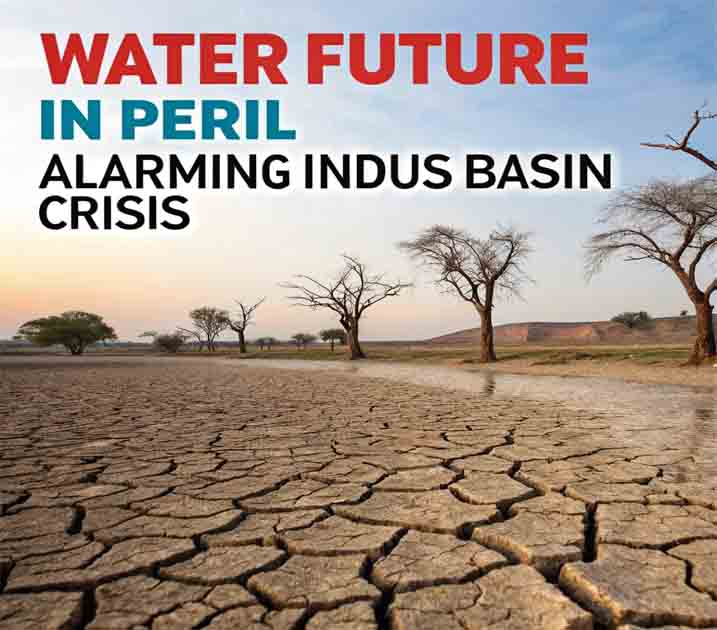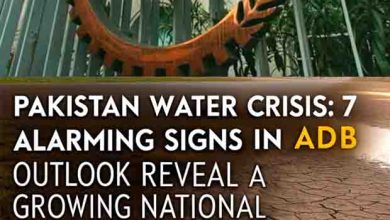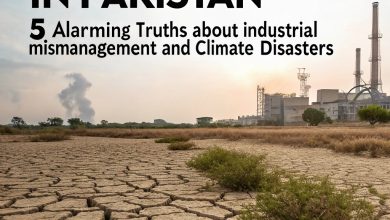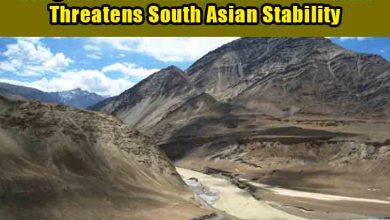Water Future in Peril: UN Report Warns of Alarming Indus Basin Crisis
The UN's 2025 Water Report reveals a grim water future for the Indus Basin. Drought, glacier retreat, and water shortages threaten millions in South Asia.
The water future of South Asia, particularly the Indus Basin, is facing a dire threat, according to the UN’s World Water Development Report 2025. The report highlights accelerating glacier retreat in the Hindukush-Himalayan (HKH) region, which is melting 65% faster during 2011–2020 compared to the previous decade — and faster than the global average.
UN Report Highlights Glacier Melting
The Hindukush-Himalayan (HKH) region, also known as the “water tower of Asia”, spans 3,500 km and supports 10 major river systems — including the Indus River. The alarming rate of glacial melt has far-reaching implications for 1.9 billion people, nearly a quarter of the world’s population, who depend on these rivers for agriculture, energy, and daily consumption.
Impact on Indus Basin and South Asia
Key threats include:
-
Reduced water availability
-
Decreased crop yields
-
Energy shortfalls
-
Livelihood instability
With reduced glacial runoff, long-term projections suggest frequent drought cycles that could cripple water supplies in Pakistan, India, and Bangladesh — countries reliant on the Indus, Ganges, and Brahmaputra.
Current Drought Warning in Pakistan
Pakistan’s Met Office has sounded the alarm on a prolonged drought affecting major agricultural regions. According to their advisory:
-
40% less rainfall nationwide
-
Sindh province hardest hit with a 62% rainfall deficit since Sept 2024
-
Southern Balochistan and Eastern Punjab also under drought threat
-
Flash droughts predicted in coming months
Such dry spells are depleting reservoirs, drying up barrages, and impacting both drinking water and irrigation systems.
Reservoirs at Dead-Level: A Grim Outlook
By late March, both Tarbela and Chashma reservoirs had reached dead levels, leaving the Indus River with historically low flows.
-
Sindh reported a 51% water shortage
-
Canals were receiving 70% less water
-
Farmers advised against sowing Kharif crops
-
Water requirement for early Kharif: 40,000 cusecs
-
Actual inflow: less than 20,000 cusecs
The situation is worsened by rising April temperatures, increasing soil moisture evaporation, and threatening key crops such as:
-
Cotton
-
Sugarcane
-
Mangoes
-
Bananas
-
Vegetables

Data Reveals Alarming Decline in River Flows
Historical river discharge data paints a bleak picture:
-
Western rivers (Indus, Jhelum, Chenab):
-
1976–1998 average: 135.82 MAF
-
1999–2023 average: 120.79 MAF
-
-
Eastern rivers (Ravi, Sutlej, Beas):
-
Dropped from 9.35 MAF to 2.96 MAF
-
In recent years, Tarbela Dam hit dead level in 5 out of the last 10 years by late March. Mangla Dam fared better, but water distribution remains contentious — with Punjab storing water for its own Kharif crops, often at Sindh’s expense.
Protests Against New Canals and Farming
As water scarcity intensifies, public outrage is growing in Sindh over:
-
Construction of new canals
-
Introduction of corporate farming schemes in Cholistan
Activists argue these projects ignore local needs and accelerate environmental degradation. With no major riverine floods since 2010 (excluding the 2022 deluge caused by mountain runoff), the overall flow trend is declining.
Urgent Need for a National Drought Emergency
Given the multiple indicators of water stress, experts urge a National Drought Emergency and call for a shift in water management strategy.
Recommended actions:
-
End large-scale, engineering-centric water projects
-
Prioritize water conservation
-
Develop long-term drought mitigation policies
-
Improve land and water productivity
-
Support climate-resilient crops
-
Educate farmers on efficient irrigation methods
Conclusion: Saving the Water Future
The UN’s water report is a wake-up call for South Asia, especially Pakistan, where water future planning must be central to climate resilience.
If proactive steps are not taken, future generations may face catastrophic droughts, food insecurity, and mass displacement due to water scarcity. Water is no longer a guaranteed resource — it must be treated as a strategic national asset.








